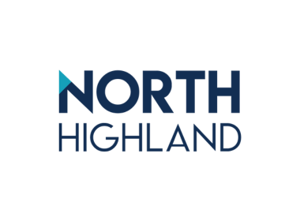Perhaps the most dangerous adage in the fourth industrial revolution is this one: “Do what you do best and outsource the rest.”
In the digital age, it’s an adage that perpetuates dependency and precipitates an exodus of internal talent and skillsets. It insinuates that IT-enabled change is one-and-done, not constant and iterative. It suggests that “the rest” is unimportant, only to be procured at the lowest day rate possible.
And it’s in direct opposition to this adage that a company like Nike—which at its best designs, manufactures, and markets shoes—calls itself a technology company.
We all need to make digital a bigger part of what we do best.
The adages of previous revolutions no longer serve us. We can no longer throw agile, DevOps, digital, and other IT-enabled change over the wall through outsourcing. However, we also can’t pause—or even slow down—long enough to hire and develop internally in the right way.
 Instead, we must make sourcing a strategic driver of our workforce and operating model development. In a report titled “Rework Your Sourcing Practices to Fuel Innovation and Growth,” Forrester explains that “in leading organizations, sourcing is in the foreground as an orchestration function that takes value creation to a whole new level. In these companies, sourcing delivers up to 60 percent higher returns on the assets in procurement with significant benefits to the bottom line…"
Instead, we must make sourcing a strategic driver of our workforce and operating model development. In a report titled “Rework Your Sourcing Practices to Fuel Innovation and Growth,” Forrester explains that “in leading organizations, sourcing is in the foreground as an orchestration function that takes value creation to a whole new level. In these companies, sourcing delivers up to 60 percent higher returns on the assets in procurement with significant benefits to the bottom line…"
Sustainable value today isn’t generated by being first, but by being fast: faster and more frequent IT-enabled change; faster recovery when things fail; and faster change adoption organization-wide.
Traditional outsourcing is a barrier to successful change fast. A 2019 analysis of 14 enterprise journeys showed that organizations that delivered successful digital transformation were more likely to reduce outsourcing, on average from 70 percent outsourced to 30 percent, over the years their journey encompassed.
Yet consultancies and staff augmentation firms are designed to explicitly prevent insourcing of this kind. And it’s our own fault: Global systems integrators have built their business models in response to contracts let for the lowest cost IT, where real-time learning was outlawed, and collaboration between partners was considered conspiratorial. Those business models stoke unproductive competition and reinforce an unhealthy correlation between client dependency and revenue security for consultancies and staff augmentation firms.
These challenges are all by-products of a “mess for less” sourcing model that simply doesn’t serve organizations what they need now: A sourcing ecosystem designed to transform you into a company that does digital best.
It starts with an operating model that prioritizes capability-building over day rates. In doing so, sourcing moves from being an “order-taker and a utility that is constantly trying to deliver a request…to being a partner in delivering value,” said Forrester Vice President and Principal Analyst Bobby Cameron. “An IT organization that is solely focused on executing at low cost will never get to that point.”
Ready to do digital best by weaving strategic sourcing into the connective tissue of your organization?
Your c-suite and internal structures
Get HR on board and actively engaged in the capability build. Make sourcing a force multiplier for recruitment and hiring. Create a collective HR/sourcing strategy, get leadership alignment across the organization (CFO, CHRO, CIO, and front-line business leaders), and publish it to the talent market you want to attract. If you want people to commit their organizational resources and careers, then you must be purposeful about what you're going to build and how it benefits them.

Build a value muscle through procurement. Your organization's approach to buying services has the power to shift your business priorities from day rates to building lasting human capability. To create an operating model that prioritizes capability-building, your procurement strategy must focus on value, not just cost. Organizations are masters at measuring and tightly controlling costs, but they must build an equivalent level of focus, measurement, and governance around value to drive down overall, not unit costs while driving up transformation success.
Quickly mature a scheduling function. Scheduling is the underappreciated lifeblood of capability-building. Done well, it balances the development needs of both the product and your people. Strategic scheduling offers growth-opportunity projects to your internal talent and provides the support and time to accommodate a learning curve.
Balance the power between the center of excellence (CoE) and the cross-functional product teams they supply. Product teams are an enabler for DevOps. If the CoE holds too much power, the product teams don’t get the service they need. And if the product teams have too much power, the CoE cannot plan its strategic growth, and is instead just reacting to demand, building capability on the scraps of your major projects.
Your people
Outsource to grow. Hire experienced talent that is incentivized to grow the internal talent around it.
Activate your change makers. Despite the best-laid digital plans, we all know culture eats strategy for breakfast. No transformation can reap its full value potential without cultural buy-in, which is best won through an integrated change management effort.
Your partners
Create a learning community. Align learning opportunities with talent needs and cultivate a culture of continuous learning and growth.
Eliminate competition between vendors. IT-enabled transformation work must adopt a “one team, one dream” approach, which is especially difficult when multiple suppliers are working on the same capability.
Connect your organizational objectives to your partnership contracts. Trust is a critical enabler of DevOps and other IT-enabled change. Understand how your partners are incentivized to achieve your goals, both organizationally and at the individual employee level. Complete and total alignment isn’t likely, but the understanding is fundamental to building trust.
Global IT outsourcing revenue is projected to reach $587.6 million by 2027, growing at a rate of 8.2 percent each year, and yet nearly every IT organization also aspires to grow its internal talent. With the right framework, outsourcing is worth more than the sum of its parts. When strategically orchestrated it can—and should—grow your internal talent, reinforce your culture, optimize partner collaboration, and make digital a core capability organization-wide.








